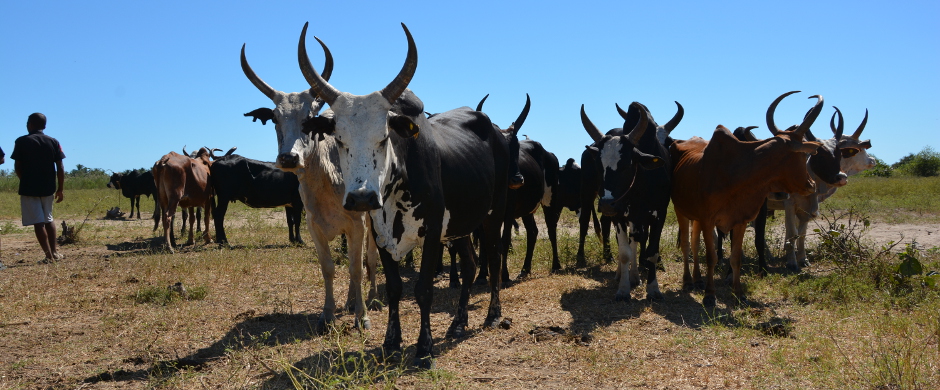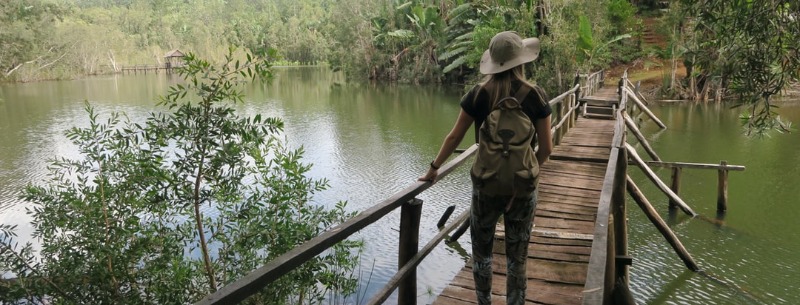Madagascar Islands Travel Guide
One of the world’s poorest nations, Madagascar is not for everyone. However, if one has a true spirit of adventure and is willing to welcome the unexpected as the very essence of adventure travel, Madagascar offers the chance to experience incredible flora and unique wildlife in a pristine land.
Nothing can prepare you for your first visit to Madagascar, the fourth largest island in the world. It is completely unlike anything you have experienced before. Madagascar is an Eden-like garden of riches, filled with a diversity of life and geography unequaled anywhere else on earth.

Madagascar lies only 250 miles from Africa, yet the local language, Malagasy, shares 90% of its vocabulary with that of the May’an tribe on the island of Borneo in Indonesia, some 5000 miles away.
Settled by the Indonesians over 1500 years ago, the Asian influence is easily seen in the faces of a large part of the population, in the food and in the local architecture. Add to these immigrants from Africa, Europe, and China and you have a fascinating mix of cultures.
Although Madagascar has over 1,800 miles of beautiful beaches, exceptionally good food, and offers great value for the tourist dollar, its UNIQUE features are it greatest attraction.
Key points
- 80% of the animals in Madagascar are found nowhere else in the world.
- There are 50 different species of lemur alone, the smallest being the Mouse Lemur, about the size of a fist, and the largest being the Indri, about half the size of a chimpanzee.
- Seven of the world’s eight species of baobab are found on the island, and to date over 1000 species of orchid have been identified.
- The north boasts over 30 islands in the Nosy Be and nearby Nosy Mitsio archipelagos, the east dense forests and wetlands, the west lunar landscapes of limestone known as Tsingy and the south canyons, beaches and baobabs.
- Only 3 hours flight from Johannesburg, South Africa, making it a perfect beach add-on destination after a safari.
Although Madagascar has over 1,800 miles of beautiful beaches, exceptionally good food, and offers great value for the tourist dollar, its UNIQUE features are it greatest attraction.
Must-see attractions
Madagascar is becoming a popular eco-tourism destination that appeals to those with an interest in natural history and ecology. The island of Madagascar split from continental Africa around 160 million years ago and as a result, many of Madagascar’s mammal, reptile and plant species are endemic – that is, they are to be found nowhere else on earth.
Anjajavy
An excellent option if looking for a combination of natural history and upmarket secluded beach. The Anjajavy Reserve is an extraordinarily well-preserved habitat of dry deciduous forest, which is home to chameleons, Coquerel’s sifaka, mouse lemurs, and the rare Madagascan fish eagle. Situated 120 km north of Mahajanga is the luxury Anjajavy Hotel. Regarded as a four-star hotel (Relais & Chateaux Hotels), it is built on a peninsula in a large bay, behind which lies a large natural reserve of 450 acres – perfect for nature lovers!
Ankarana reserve
The “Lost World within the Lost World”. A bizarre landscape 65-km south of Diego Suarez (Antsiranana), featuring a fortress-like limestone plateau decorated with fields of sharp pinnacles. Underneath are awesome caves, passages and subterranean rivers. Wildlife abounds in forested canyons. Ideally, Ankarana Reserve is visited in combination with Montagne d’Ambre Reserve and Nosy Be.
Andasibe Mantadia
The park consists of two protected areas, the special Reserve of Indri d’Analamazaotra and the National Park of Mantadia. Analamazaotra, better known as Perinet, is world-famous for its population of Indri Lemurs, which are the largest living lemur. Anyone within a mile of the park is sure to hear the haunting call of the Indri in the morning, from daybreak to around noon, and then again in the late afternoon.

Berenty Reserve & Andohahela National Park
There is a magnificent diversity of both wildlife and plant life in the Fort Dauphin region of southeastern Madagascar. For sub-desert lemurs, you can’t beat Berenty. In this small protected habitat live large populations of Ring-tailed Lemur, Red-fronted Brown Lemur, and Verreaux’s Sifaka, as well as White-footed Sportive Lemur, Reddish-grey and Grey Mouse Lemurs.
Ifaty Beach, Anakao, Saint Augustin Bay & Tulear
The southwest desert corner of Madagascar. There’s plenty to see in this remote, low-key area – coral reefs, spiny bush, and rare birds are the main attractions. Seaside hotels at Ifaty Beach and St Augustin Bay offer scuba diving and snorkeling, as well as trips to Nosy Ve marine reserve islet, off remote Anakao.
Mahajanga, Ampijoroa Forest Station
One of Madagascar’s top wildlife hotspots with easy trails, accessible all year round, into the tropical dry deciduous forest, over gentle terrain. There are abundant lemurs, especially Coquerel’s Sifaka, Mongoose Lemur, Brown Lemur and at night, Western Woolly Lemur, Fat-tailed Dwarf Lemur and two species of Mouse Lemur. As it is the best place in western Madagascar for birding, Ampijoroa is included in all birding itineraries.
Masoala Peninsula & Nosy Mangabe
Maroantsetra is the gateway to the eco-tourist destination Masoala. Nosy Mangabe is a rainforest-clad lemur reserve island, where large populations of Black & White Ruffed Lemur, White-fronted Lemur, and the bizarre Aye Aye find sanctuary. The campsite on Nosy Mangabe has been upgraded, and staying there for at least a night is recommended.
Morondava, The Baobab Avenue & Kirindy Forest
Morondava is a vibrant west coast town and center of the Menabe Sakalava sub-tribe, which offers wide beaches where swimming is safe. 60km to the north by sand road is the Kirindy Forest, Madagascar’s best place for nocturnal wildlife, where rare mammals, birds and three species of Baobab trees flourish there.
Nosy Be Archipelago, Tsarabanjina & Iranja
Nosy Be is situated off the north-west coast of Madagascar and has about 40,000 inhabitants. It is commonly known as the “Big Island” – it measures 30km by 40 km – as there are numerous smaller surrounding islands which it makes up the Nosy Be Archipelago.
Its tropical climate and classical ‘Indian Ocean holiday island’ appeal make it a leading sea, sun and sand destination. The average temperature is 25 – 30º Celsius.
To make the most of your time on Nosy Be, be sure to visit some of the surrounding islands. Deservedly the most popular of these is Nosy Tanikely, a marine reserve offering world-class snorkeling and diving.
The best beaches are Andilana Beach and Amporaha on Nosy Be itself and the smaller island of Nosy Iranja, and Tsarabanjina on Nosy Mitsio.
When to visit
Madagascar’s hot, sub-tropical climate makes it suitable for a holiday at any time of year. The north and east of the island are subject to storms, occasionally even typhoons, between December and March and these times are best avoided, but otherwise, you’re advised to time your trip to make the most of the wildlife watching opportunities.
Seasonal Activities
Any time is a good time to visit Madagascar, depending on your interests.
Photo Safari
Madagascar is a photographer’s paradise and is beautiful year-round, however, we particularly like the months of April and May, after the rains when everything is lush and green.
Lemurs
September to October is the ideal time to see and photograph lemurs, as this is when the new babies are born.
Reptiles and Amphibians
Amphibians and reptiles are present year-round but are best viewed during the rainy season, January through March.
Birds
Birders tend to choose September to December, the breeding season, which is the most suitable time to locate birds as they are more vocal. Visits before and after this period have also proved to be good, especially in the south and the west.
Sun, Sand, Snorkelling, Diving, and Fishing
The weather is ideal for a beach or water-based activities all year round. The hottest months are November to March when average daily temperatures exceed 25°C and maximum temperatures often exceed 30°C.
Whale-Watching
From June to September humpback whales return from the Antarctic to spawn near Ile Sainte Marie.
Ritual Ceremonies
The best known Malagasy ceremony is the ‘bone-turning’ or ‘famadihana’ ceremony, held from June to August.

